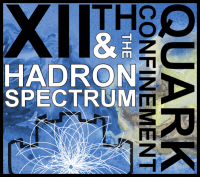Speaker
Description
Since the first heavy-ion collisions which date back to thirty years ago, quarkonium is considered one among the most important probes of the formation of a plasma of quarks and gluons.
Quarkonium production is, in fact, expected to be strongly modified by the creation of a hot medium. On one side, quarkonium yields are suppressed, due to the Debye screening, with respect to those measured in pp interactions scaled by the number of binary collisions. The size of the suppression depends on the energy of the collision and on the strength of the binding energy between the $c$ and $\bar{c}$ or $b$ and $\bar{b}$ quarks. On the other side, for high-energy collisions, an additional quarkonium production mechanism sets in, i.e. the recombination of the quarks during the collision evolution or at the phase boundary. This process might counterbalance the suppression mechanism.
On top of these hot-matter effects, quarkonium production is also affected by mechanims related to the presence of cold nuclear matter. While the first type of effects can be investigated comparing results for several quarkonium states, obtained, in A-A interactions, at different collision energies, the cold-matter effects can be addressed by studying the quarkonium behaviour in collisions systems as p-A or d-A.
In this talk, an overview of the quarkonium results will be presented, discussing the measurements on $J/\psi$, $\psi$(2S) and $\Upsilon$ states at RHIC and at LHC energies, both in p-A (d-A) and in A-A collisions. Particular emphasis will be given to the most recent results from LHC Run-2.
Summary
Experimental overview of quarkonium results from RHIC to LHC energies, from p-A to A-A collisions.




